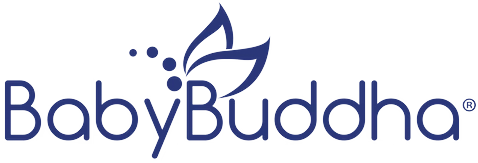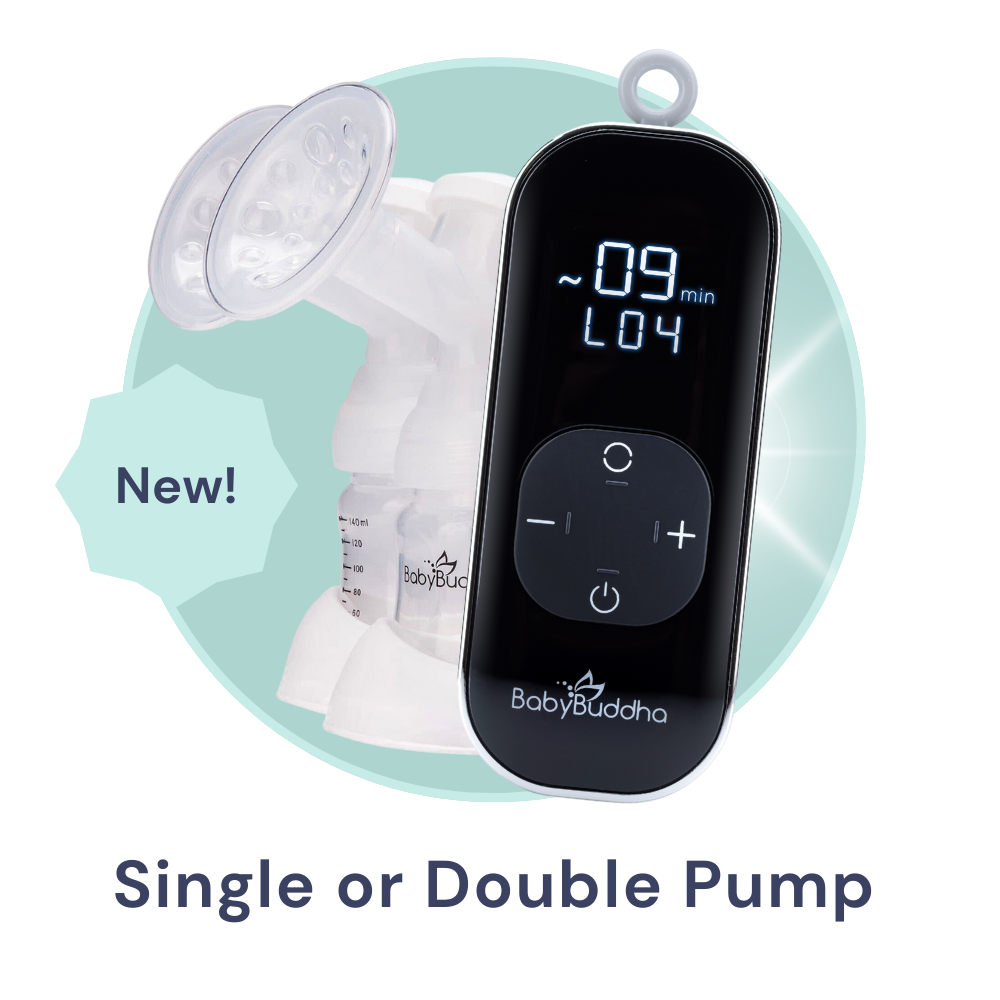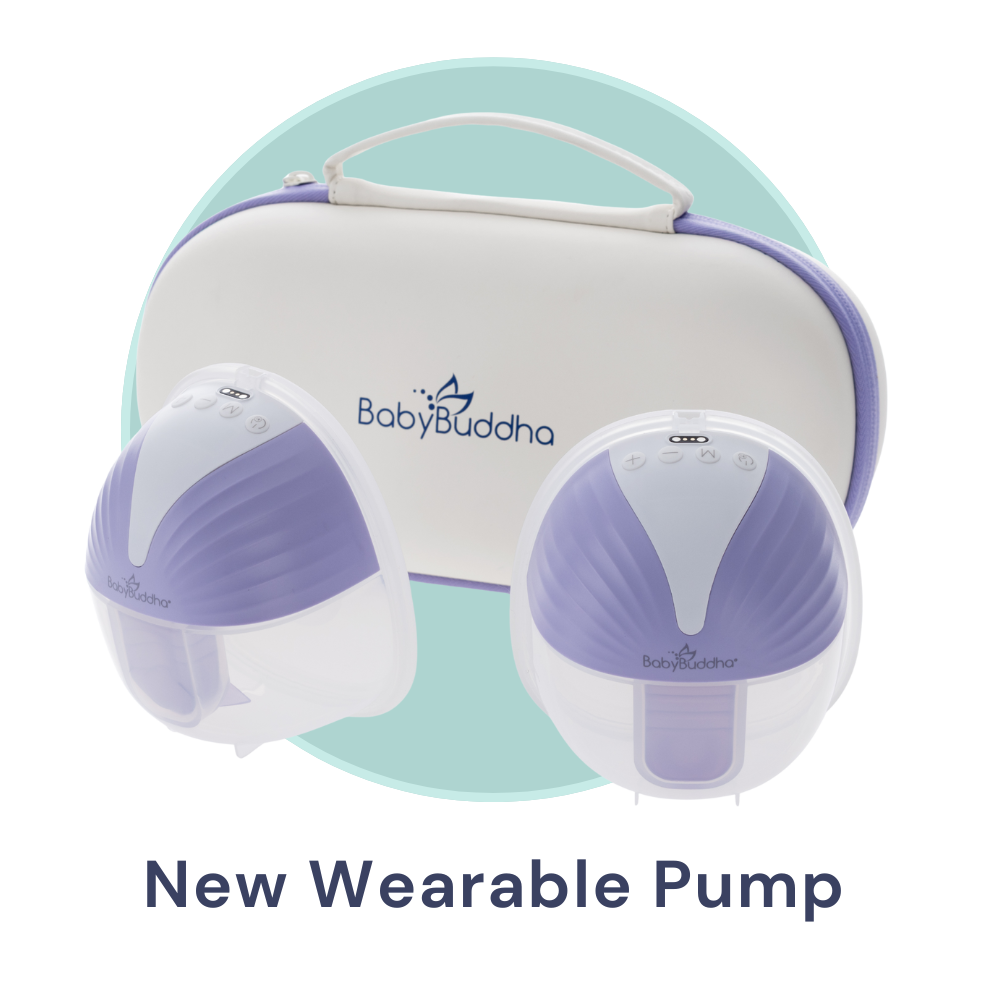Medically Reviewed By | Dr. Hope Lima, PhD, RDN, LRD, IBCLC
There is so much to consider when you are thinking of how to establish a breast pumping schedule that will suit you and your baby’s needs, schedule, and postpartum lifestyle.
How often should I pump? How much milk should I be pumping? How can I create an exclusive pumping schedule? These are all questions that you are probably asking yourself.
Whether this is your first baby or your fourth, every feeding journey is different. New moms and seasoned moms alike can use support in developing a pumping schedule that works for them. This article will get you started with creating a pumping schedule to help keep your little one happy and healthy.
First Steps
Here are some easy-to-follow first steps to take before creating your ideal pumping schedule:
1. Purchase Your Breast Pump
This may seem like an obvious first step, but choosing the right pump for you is key. Depending on your needs, you may opt to go with a battery-powered pump like the BabyBuddha® Single or Double Portable Breast Pump that you can pair with a pumping bra so that you can be on the go more while you pump.
If you’ll be pumping less frequently or just as needed after breastfeeding, consider a manual breast pump instead. This option won’t result in as much breast milk output but is still helpful for relieving engorgement and pumping every now and then.
Use the BabyBuddha insurance forms to help cover the cost of your hospital-grade pump. Also, check out our flange fitting guide to be sure you are getting a properly sized flange for your breasts.
2. Know How To Properly Clean Your Pump
It is essential to know how to properly clean your breast pump, regardless of which style of pump you use. Improper sanitization and cleaning of pump parts can lead to bacteria growth, rendering breast milk unsafe for a baby to consume.
Clean your pump before first use as well so that it is free of any germs from production or shipping processes. Additionally, clean all parts of the pump thoroughly after every use and allow them to dry fully before using them again.
3. Know How To Properly Store and Thaw Breast Milk
Whether you are exclusively pumping or just storing extra breastmilk to create a freezer stash, knowing how to safely store your milk is vital to your pumping journey. Improper milk storage can lead to having to discard milk that is no longer safe for your baby to consume.
Knowing how to safely thaw your milk is also critical to protect your child from potential burns in their mouth or throat. Keep in mind that if you have a separate caregiver for your child, they should know this information too.
When you have these first steps taken care of, you can dive into creating a pumping schedule that works for you.
Things to Consider When Creating Your Pumping Schedule
Every mom’s pumping schedule will look a little different depending on your and your baby’s needs. Here are some things to have in mind when creating your pumping schedule.
Feeding Style
Your pumping schedule will depend heavily on your chosen feeding style.
-
Exclusively Pumping: If you have decided to be an exclusive pumper, you’ll usually have a pumping session as often as a baby would typically nurse during the day. This can be anywhere from eight to twelve times a day.
-
For an exclusive pumper, Lactation Expert Dr. Hope Lima, PhD, RD, IBCLC, advises paying attention to how frequently your baby is showing hunger cues. Afterward, you can work on matching your pumping schedule to their feeding frequency. As you learn how much they’re taking regularly, you may be able to space out your pumping sessions if you’re making enough milk.
-
Combination Feeding: This usually means that you will be both breastfeeding and bottle-feeding. This will require less time pumping than exclusive pumping moms, but you may still pump up to five or six times a day, depending on your milk production and how much your baby eats.
-
Primarily Breastfeeding: You may focus on a breastfeeding schedule and only want to pump on occasions you’re separated from your baby or you’re concerned about milk supply fluctuations (like during menstruation). In this case, you will typically only pump a few times a day after a nursing session. This is a good practice to help prevent clogged ducts and mastitis.
-
Dr. Lima warns that, while you want to ensure your breasts are empty, you should avoid overdoing it: “Adding in pump sessions just because can actually increase the risk of plugged ducts/mastitis, as you could trigger an increase in supply that is then not drained seeing as it exceeds your baby's needs.”
Your Growing Baby’s Needs
The amount of milk your baby needs will vary depending on several factors, which will in turn affect when and how long you need to pump. “Human milk composition changes over time, and your baby's ability to utilize breast milk increases as they age,” comments Dr. Lima. “Many babies may not require more volume as they age, but every child is different. What’s important is making sure your baby is getting the right amount of milk.”
If you are starting your pumping schedule right after your baby is born, though at this time they need less milk, it is important to pump more often to establish your milk supply. However, if you have waited and are starting your pumping schedule when your baby is older to supplement well-established breastfeeding, you may not need to pump as often.
Creating a Pumping Schedule To Increase Breast Milk Supply
Pumping is an excellent way to help increase milk supply, and this should be considered when creating your ideal pumping schedule. If you want to increase your supply, talking with a lactation consultant can be beneficial, and you can access one with your BabyBuddha pump purchase!
In the meantime, here are a few pumping tips to help you increase your milk supply:
- Power Pumping: This can be a very effective way to increase your breast milk supply. A sample power pumping schedule often looks like pumping for 20 minutes, taking a ten-minute break, pumping for ten minutes, another ten-minute break, and a final ten-minute pumping time. This can be safely done two to three times in a 24-hour period.
- Pumping After Nursing: When creating your pumping schedule and trying to increase your breast milk supply, consider pumping after nursing. This ensures that the most milk is expressed and your breasts are empty. This signals your body to create more milk to refill them. Use your double electric pump for hands-free pumping so you can do something else while still fully emptying your breasts.
Remember: The Schedule May Need to Change
Keep in mind that there will be times when your breast pumping schedule may need to be adjusted. This is not a bad thing! Sometimes it is simply trial and error until you find a routine that works best for you.
While you’re figuring out what works for you, it’s important to assess how your milk production looks in comparison to your baby’s milk intake, your baby’s feeding frequency, and if you’re regularly experiencing engorgement, plugged ducts, or mastitis. Dr. Lima notes it’s normal to have a fluctuating schedule, especially before you and your baby fall in sync, saying, “During the first few weeks of adding in pumping, you may need to assess your schedule every day or two and adjust as needed.”
Other times that your schedule may need to change or be adjusted are if/when mom is going back to work, your baby is getting ready to eat solids, or if you’re considering weaning.
Other Tips
Here are a few additional tips to aid you in creating your pumping schedule:
- Build in time to massage your breasts before pumping. This can help increase milk flow and achieve a faster letdown once you begin pumping.
- Set up a “pumping space” by getting a cozy chair and some pillows. Pumping can be stressful and hard on your body, so having a peaceful spot to pump can really help some women.
- Make it fun! Some moms like to catch up on their favorite shows or listen to their favorite music while pumping to make the time go by faster. Keep headphones and a phone charger near your pumping space.
- Consider trying hand expression if you find your breasts are getting too full between pumping sessions. If this is often the case, you may want to also consider adding a session or two to your schedule.
- If you’re separated from your baby, consider bringing along a piece of their clothing or a video of your baby to watch while you pump. This can help increase the amount of milk-making hormones in your bloodstream.
Information on Pumping for Working Moms
When you are a working mom, there can be a lot of questions regarding pumping at work. The good news is that pumping and breastfeeding moms are protected by laws that provide time and separate space for pumping breast milk while at work.
Note that these pumping laws depend on the size of your company or organization. Talk with HR or your employer about how this applies to you and your company. It may be wise to have this conversation before you head out on your maternity leave.
You may also consider providing your employer with a sample pumping schedule. While not required, this could help you and your employer decide how to best meet your breastfeeding and pumping needs.
Don’t forget to take any milk you pump at work home with you at the end of your workday.
You’ve Got This
We know that creating an ideal pumping schedule can be a time-consuming task. Don’t be discouraged! Remember that sometimes you may need to adjust the schedule, and that’s ok.
Regardless of whether this is your first time creating a pumping schedule or if you’ve created several, we hope that this guide has helped you feel more confident in setting up the right pumping routine for you and your family.
Remember to always check with your healthcare provider or a board-certified lactation consultant if you have concerns about your health or milk supply and production. In addition to these professionals, our support agents are just a chat away if you have any questions that we can help with.
Happy pumping!
Sources:
How to Keep Your Breast Pump Clean | CDC
How to Prevent Mastitis: Understanding This Common Breast Health Issue | Dignity Health
How Much Milk Your Baby Needs | USDA
What Breastfeeding Employees Need to Know | Office on Women’s Health
Frequently Asked Questions - Pumping at Work | U.S. Department of Labor








